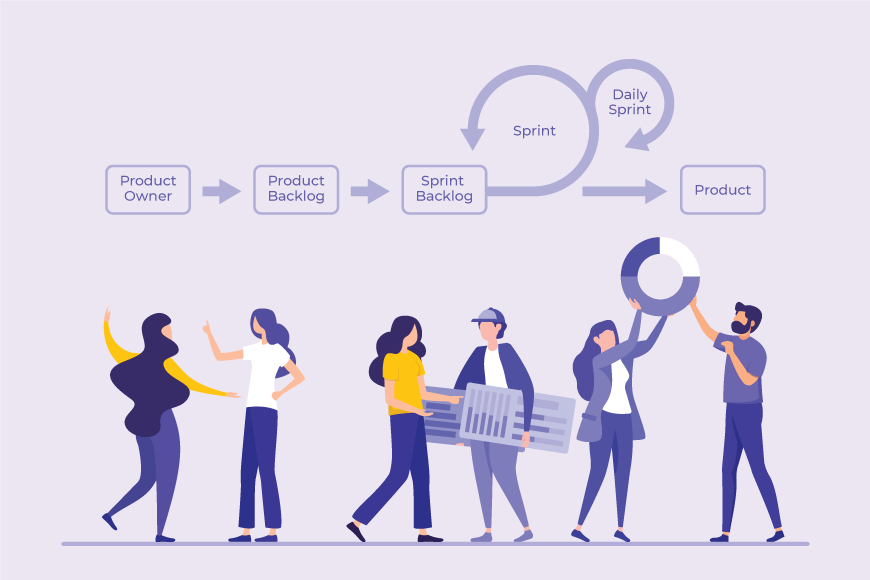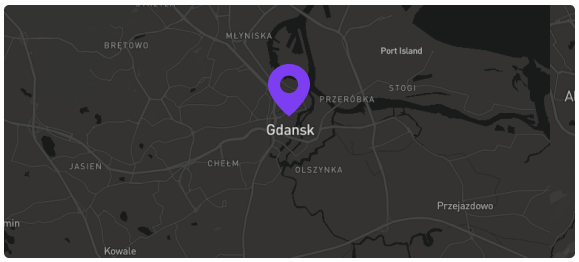Before

Who would you call a product owner in Scrum? Originally, this concept did not exist. There was a project manager. And his duties were, to put it mildly, contradictory. The PM was responsible for the exact opposite stuff. He was both on the performer’s and the customer’s sides, even though their interests diverged.
Project management is based on well-coordinated teamwork, though. The manager did not follow the product development after its delivery, did not sell or promote it. Their mission area included only product development. Maybe this is precisely why many ambitious projects failed.
Moreover, project management is often carried out by several people – a marketing manager, a project manager, a technical manager, etc.
The main disadvantages of such an approach are:
- Diffusion of personal responsibility – Too many cooks spoil the broth.
- Too long decision time.
Delays in decision making slow down the team. Firstly, you should find out the person who can address your issue. Then this person has to agree on the decision with all responsible members. The effectiveness of the team falls. Switching to other tasks is a wrong decision. The increase in the number of the “frozen tasks” and switching between them lead to losses.
To avoid losses, there must be one single person who
- is always available for the team
- can make any decisions on the product
What have the Scrum developers done?

Agile project management with Scrum helps to solve such problems. The methodology developers proposed to allocate the manager’s tasks among the specialists charged with the team’s work and the product owners.
The scrum approach implies that the product owner is responsible for the development and implementation of the product and its functioning for a considerable period. In addition, the owner’s mission area also includes software promotion and sales.
Thus, the product owner in Scrum is a specialist with competencies in several areas and is responsible for the entire cycle of the software being established. They should be well-versed in software products development and its promotion. The product owner thinks big and evaluates both the observed and expected performance.
A perfect product owner

If there were a standard of “product owner,” then it would satisfy the following criteria:
- Successful IT development and design experience.
- Excellent communication skills.
- Leadership experience in project implementation.
- Knowledge of sales and marketing.
But any self-starter may become a successful product owner if they know how to create profitable products and a desire to learn.
What mistakes can a product owner make?
- Offer ideas and objectives that are impossible to measure. Each goal must have a finite dimension. And each dimension must be reasonable.
- Give the colleagues no explanation why any changes and innovations are needed. The team don’t understand what objective is being pursued, so they aren’t able to do their work properly or do it slowly without sufficient motivation. In order to reach a new high in project management, the product owner should convey the idea of the entire team’s activities to the staff so that they share and support it, otherwise the work will be ineffective.
- Do not participate in the launch and implementation of the ideas. A dismissed and disinterested project owner in Scrum will get the same team. They must dig in the work completely and be well aware of each stage of the project.
- Do not analyze the result. Product development may be followed by errors and omissions. It is essential to find out what part of the plan didn’t work and why.
- Do not approve the finished work directly. The owner should see and review the product before it is deliver to the client. Perhaps they will notice some shortcomings or be able to supplement it with some fresh ideas.
- Do not consider the future of the project. Often, the owner just wants to deliver the project on time and do the job efficiently. But the future of the project is also important. It should function adequately and justify the resources invested.
To become a good product owner, one needs to expand their skills into many areas, build bridges, and benefit the team and partners.
Are you looking for an offshore team of reliable and laid-back folks who require literally no supervision, just like your friendly neighborhood development center across the street? Look no further and get in touch now.


